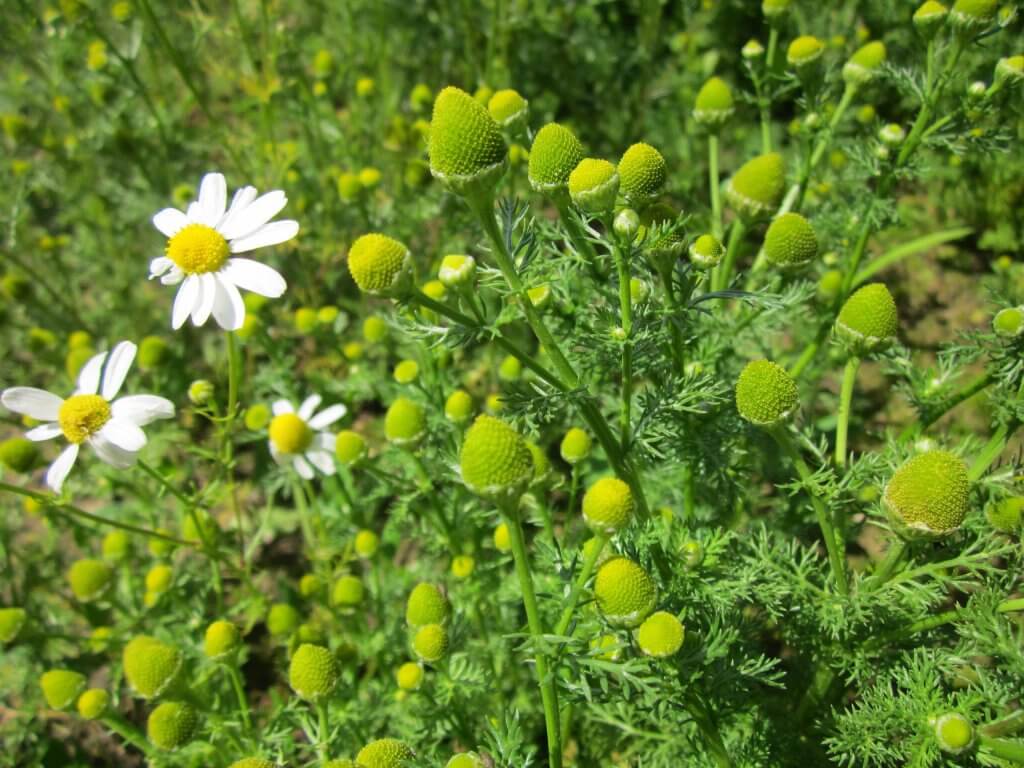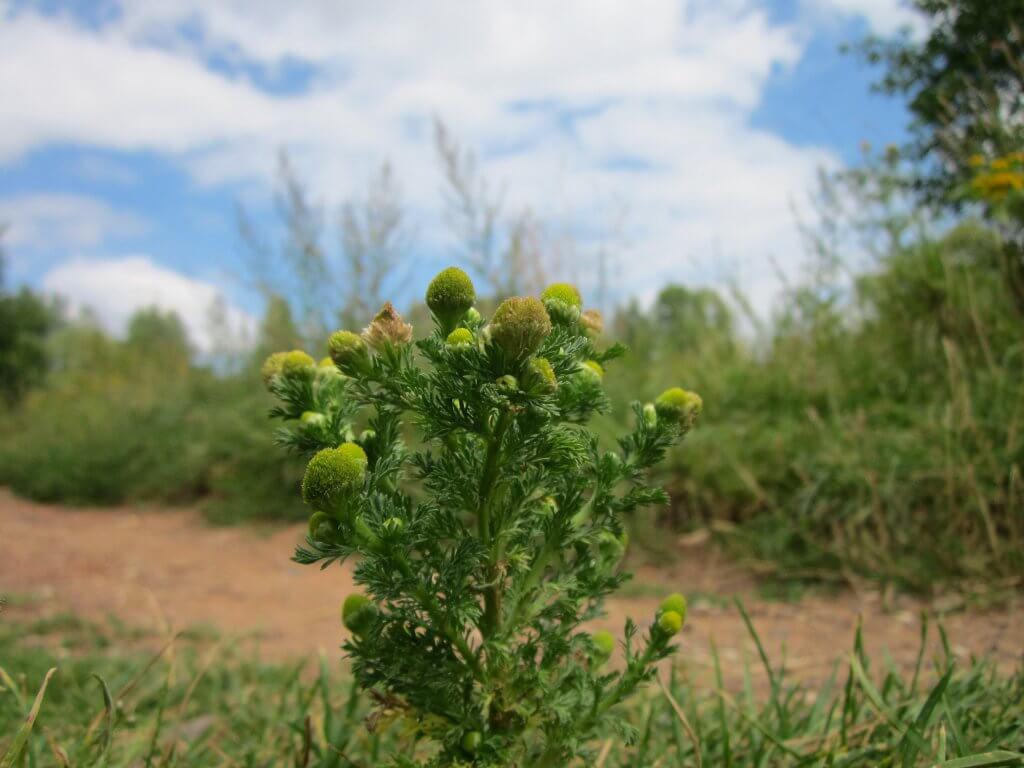Pineapple weed (Matricaria discoidea), is an invasive annual within the United States, originally endemic to Eastern Russia and Asia. It has now become largely naturalized in temperate climates throughout the world, from the UK to the US. You may also know pineapple weed by the names disc mayweed or wild chamomile.
As an invasive species it grows and establishes itself quickly within areas of loose and disturbed soil. From the grassy verges of a hiking trail through valleys and lowlands, to road and highway edges. It is relatively low growing, generally reaching a height of 20cm with a maximum height of 40cm.

A member of the daisy family it bears the recognisable central florets of similar species, like chamomile and feverfew, however it lacks the distinctive white petals. The flower head could be compared to the shape of an acorn, with a cone of compact florets emerging from the rounded sepal base. Its narrow leaves appear as pinnately dissected compounds, giving them a feathered appearance.
Edible parts and other uses
Pineapple weed has gained its name not by its appearance, but by its taste and smell. The chunky flower heads have a sweet tropical flavoring, extremely close to the taste of sweet chunks of pineapple and fresh apples.
These sweet tasting flower heads make an excellent addition to a salad, especially with cheese to counteract the sweetness. Like cotula, it also makes a wonderfully fragrant herbal tea. Fresh, or dried, leaves and flowers can be infused with water to create a soothing hot drink.
A number of foraging individuals have also incorporated pineapple weed into recipes for syrups, jellies and even liquor.

As well as a relaxing herbal tea, pineapple weed was also widely used to treat a number of ailments. In folk medicine it was boiled and mixed into concoctions to soothe and treat respiratory illnesses, inflammations and uterine disorders.
Because of the sweet aroma, pineapple weed has a history of use as a source of fragrance. From creating perfumes, infusing bath water, to creating a concoction to apply to the skin to repel mosquitoes.
Cautions
As a member of the Asteracae (daisy) family and a close relative to ragweed, the pollen can cause a serious allergic reaction. You should not consume pineapple weed if you have hay fever or if you experience any skin reactions when handling the plant.
Pineapple weed should be safe for beginner foragers as the flower heads are so distinctive with their lack of visible petals. Some edible lookalikes could include mayweed (Anthemis cotula) and chamomile, however when the flower buds appear the difference should be quite clear.
Foraging
The flower heads taste best before they bloom, so make sure to harvest these during the spring. They are perfectly edible after blooming, throughout the summer and into September, but they will have a slightly bitter taste.
Look for them in sunny locations along field edges and trails. Their small, subtle flowers keep them inconspicuous, however they become instantly recognisable once spotted. The flowers are barely one centimeter in size, so collecting a substantial amount could take time.

Did you know…
The scientific name for pineapple weed hints at its medical use as a treatment for conditions relating to the womb or uterus. The latin word ‘matrix’, meaning ‘womb’ or ‘pregnant/breeding female’ likely helped to form the name ‘Matricaria’.
Conclusion
A real sweet treat to find whilst foraging, a cup of pineapple weed tea would be the perfect way to unwind after a day of hiking or foraging. Whether harvesting to take home or for a small sweet snack, its tropical flavoring can be a refreshing taste when out on a walk.
—————Written by Hannah Sweet
Hannah is a freelance writer and graphic designer from the UK. With a penchant for travelling, photography and all things botanical, she enjoys writing about a wealth of topics and issues, from conservation and slow living, to design and travel. Learn more about her writing and design services at www.sweetmeanders.co
Many of our readers find that subscribing to Eat The Planet is the best way to make sure they don't miss any of our valuable information about wild edibles.
See our privacy policy for more information about ads on this site







3 Responses
Thanks for the info!
I have loved this plant ever since I was a child!
I found this growing but to me it smells like sweet apples. Last year it appeared in a huge container outside. But I think whatever I had did have white peddles and but I’m kind’ve scared to eat it when I’m not sure.
If it used to have white petals, then what you found was probably the expired flower heads of chamomile. Pineapple weed also has a strong zingy smell and taste.